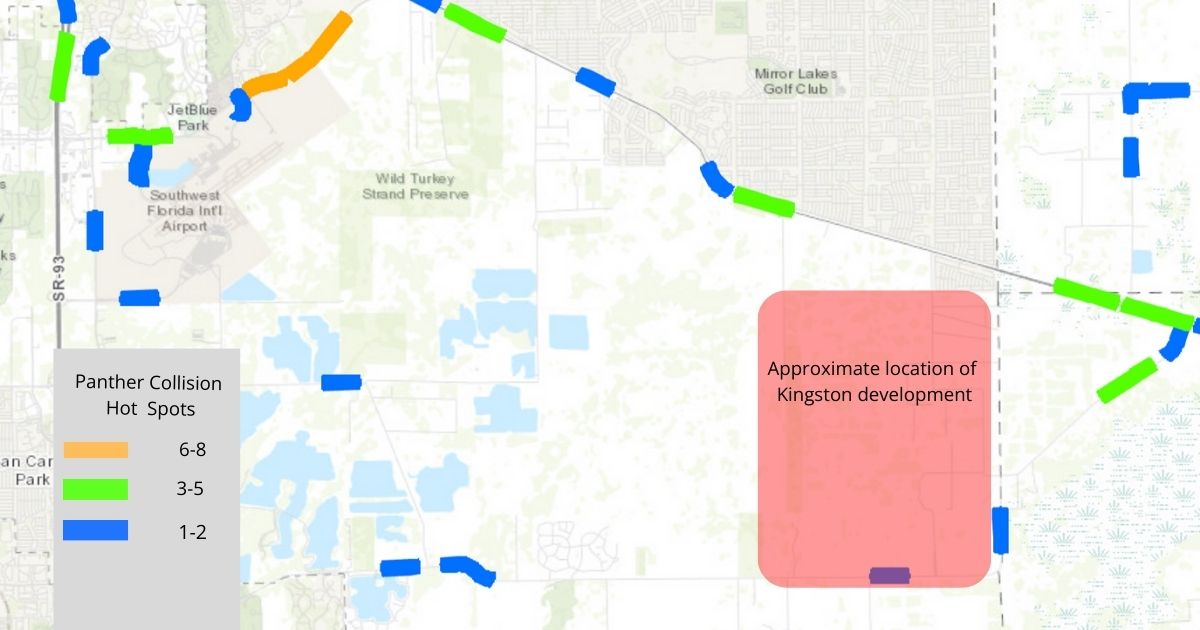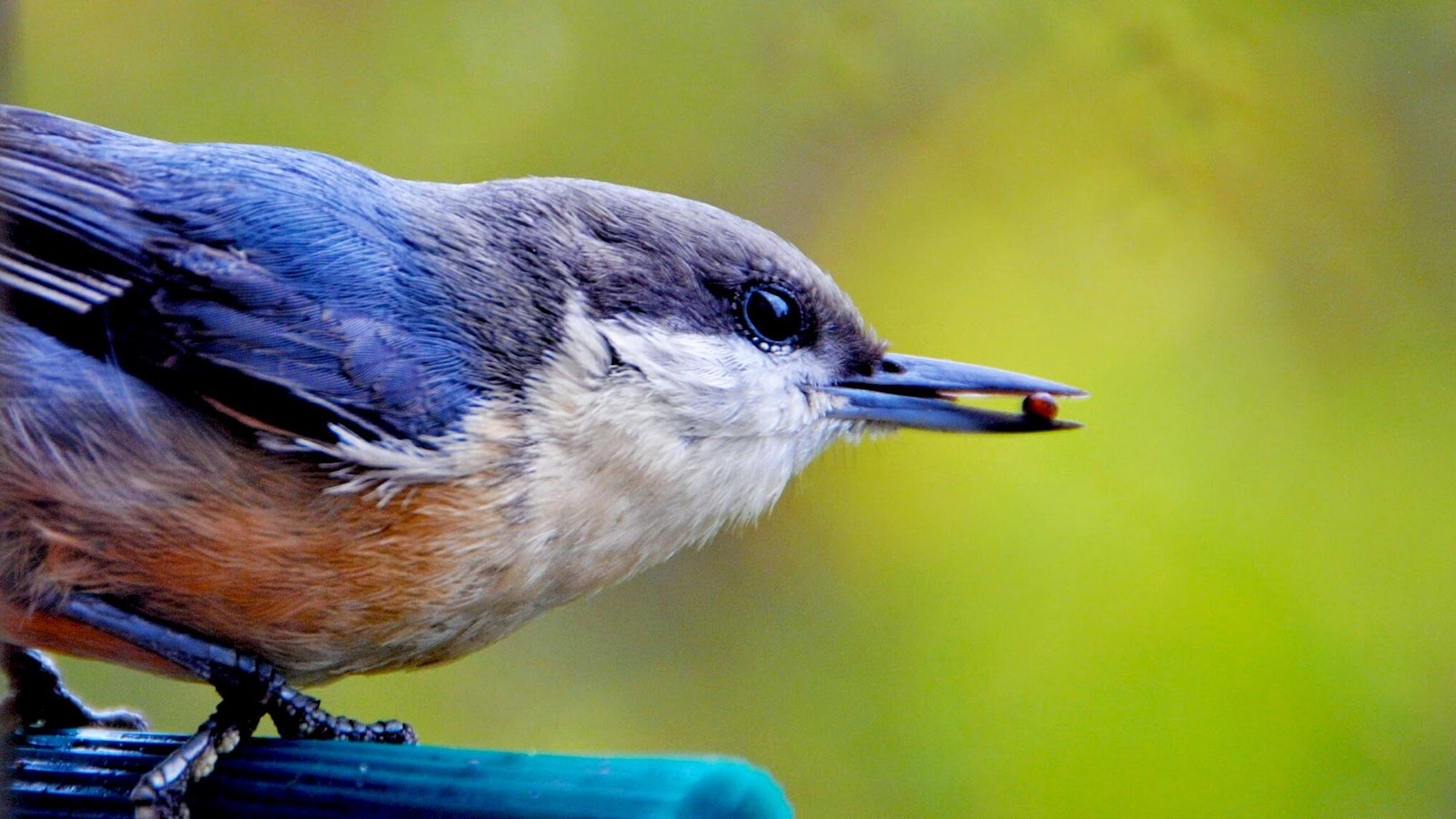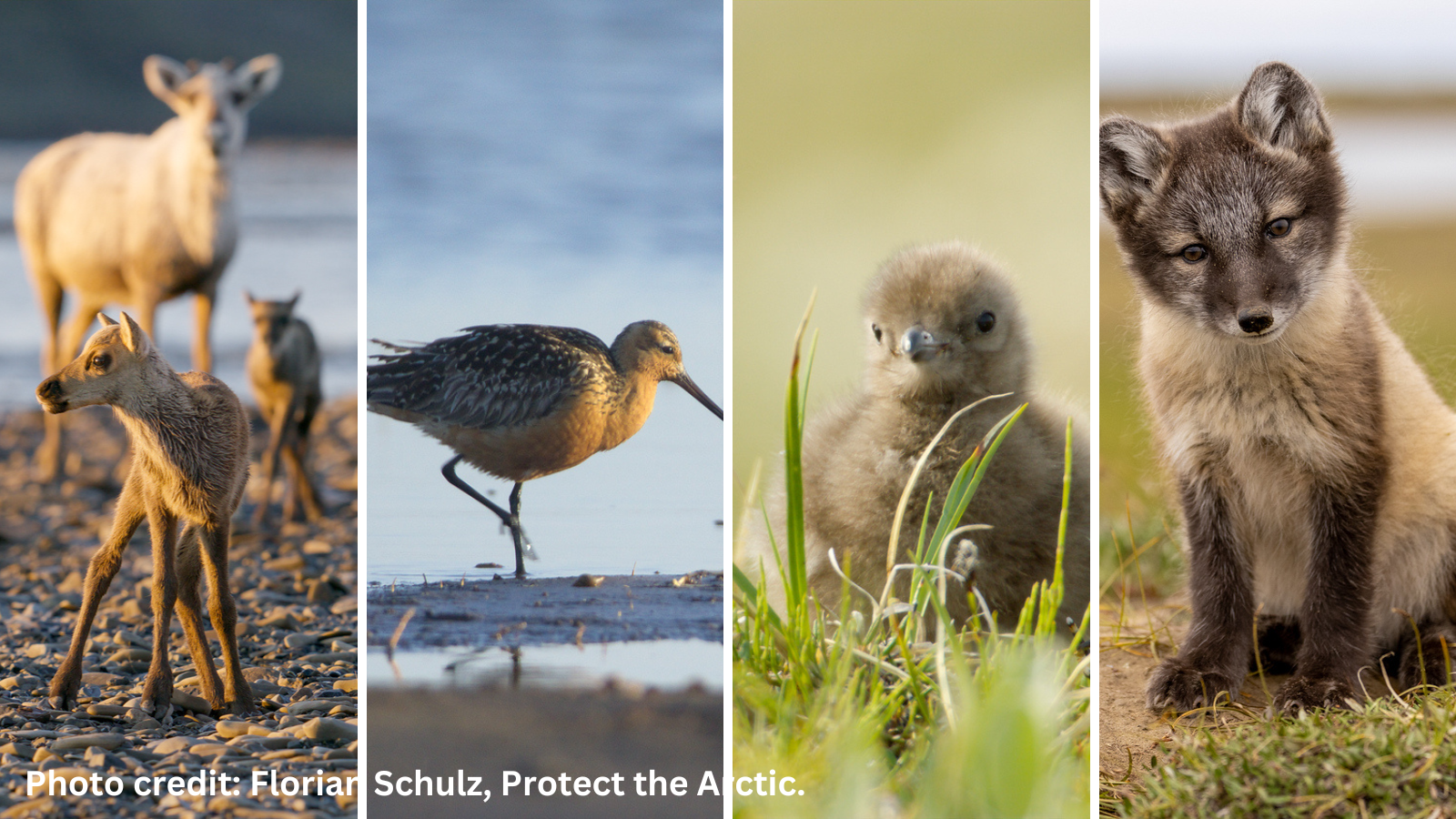
Permitting snag saves panthers, for now
A federal judge halted the permitting process for a large southwest Florida development set to go right in the middle of panther habitat.

A federal judge halted the permitting process for a large southwest Florida development set to go right in the middle of panther habitat. The court’s ruling returned permitting of federal wetlands back over to the Environmental Protection Agency, instead of allowing state officials to “fast track” it.
Plans for a deadly development
The proposed Kingston development in Lee County has roughly 13 acres of federal wetlands included in the blueprints. Developers were seeking a permit from the Florida Department of Environmental Protection to move forward with the city-sized development, which included 10,000 homes. It’s estimated to bring 95,000 more vehicle trips to the surrounding roads, which are already hotspots for deadly panther vehicle collisions.
Environment Florida and other conservation groups opposed the development during a public comment period earlier this year, telling the state agency that panther habitat needs to be preserved. Environmental groups have worked for years to bring the population back from the brink of extinction. The U.S. Fish and Wildlife Service estimates the Kingston development could lead to 23 more panther deaths a year. That’s in addition to 15-30 deaths that already occur. With a population between 120-230, that increase would send this endangered species spiraling down the path of extinction.

The snag
What halted the new development? And why? Public outcry to Lee County commissioners didn’t do it; they approved it to move forward last year. Public comments in opposition were sent to the state Department of Environmental Protection earlier this year.
But it was a federal judge who said the Environmental Protection Agency failed to follow the Endangered Species Act when it handed over wetlands permitting to the state. The purpose of the permitting is largely to make sure the Clean Waters Act is enforced, but to also take into account the endangered species that may occupy those wetlands.
The judge said the EPA failed to get approval from federal wildlife officials before allowing Florida to issue permits. Florida is one of three states to take this type of permitting over, and more are looking into it. Michigan and New Jersey are the other two. Why shift the power of issuing wetlands permits on federal waters to the state? It’s like a “fast track” for developers. The state DEP can decide on permits much faster than the federal Army Corp of Engineers, which was previously in charge of wetlands permitting.
We should strive for efficiency in government decisions, but not when it includes a shortcut through federal wildlife laws, which is what happened here and ultimately got a court to act.
Panthers get more time
The proposed Kingston development highlights the need for compliance with both the Clean Waters Act and the Endangered Species Act on federal wetlands. According to the DEP, the development sought to offset the wetlands destruction by purchasing wetlands mitigation credits and designating an area for conservation. But there is no mention of how developers would mitigate the loss to endangered Florida panthers.
For now, Florida panthers living among federal wetlands in southwest Florida can take another breath.
Topics
Authors
Mia McCormick
Advocate, Environment Florida
Mia is focused on fighting for clean waterways, protecting Florida’s environmentally sensitive areas, advocating for stronger wildlife protections and reducing plastic pollution on our beaches. Mia lives in the Tampa Bay area and loves taking her family on nature adventures.
Find Out More

EPA report says pesticides endanger wildlife

Why we should save the bees, especially the wild bees who need our help most

Why Alaska’s NPR-A, site of the Willow Project, deserves protection

